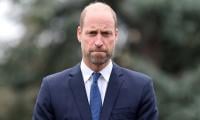The people of Punjab are fortunate to have a competent chief minister in Shahbaz Sharif. Both Nawaz Sharif and Shahbaz Sharif have carried out a long political struggle to strengthen democracy in the country.
The era of the 1990s is remembered for its wave of political instability. It is a common perception that during this period both the PML-N and the PPP kept themselves busy by toppling each other’s governments by hook or by crook. However, an independent, neutral analysis would reveal that the politics of the PML-N, led by the Sharif brothers, focused on welfare and national development.
In this regard, the M2 Motorway, which connects Islamabad to Lahore, is one of the party’s major achievements. The construction was initiated during the first tenure in 1992 and was completed during the second tenure 1997. The M2 Motorway is the first motorway built in South Asia.
The Sharif brothers understand the importance of maintaining cordial relations with the international community to achieve peace and prosperity. Despite the tremendous pressure on Pakistan in 1998, the PML-N government decided to take the bold decision of carrying out nuclear tests in the best interest of the country. Later, former Indian prime minister Atal Bihari Vajpayee – who had earlier threatened Pakistan – visited Lahore to initiate the diplomatic peace process. At this historical moment, Nawaz Sharif was the prime minister while Shahbaz Sharif was Punjab’s chief minister.
In 1999, Musharraf’s coup forced the Sharif brothers to leave the country. After they returned to the country, the people of Punjab once again reposed their confidence in Shahbaz Sharif to lead the province. The provincial government faced a number of challenges. The imposition of governor rule in Punjab was among the many obstacles that it faced. However, the widespread public support in favour of Shahbaz Sharif compelled the federal government to review its decision.
Like his elder brother, Shahbaz Sharif also believes that infrastructure is an essential aspect of an organised civic life. As a result, road transportation has been given priority by the government.
In his struggle to transform Punjab, Shahbaz is following the path of our time-tested friend China, which has invested in improving infrastructure. His government deserves credit for being the first to introduce rapid public transport through the metro bus system. After successfully operating in Lahore and the twin cities, the people of Multan and other cities will also be able to avail this facility in the near future.
Shahbaz Sharif’s doctrine of development has been replicated in other provinces as well. News reports suggest that the speedy development work in Punjab is also being acknowledged on the global level.
We must admit that Punjab is the first province to understand the importance of CPEC. In addition to improving road links, some of the ongoing development projects under CPEC are related to introducing the Orange Line Train, establishing special economic zones (SEZs) and combating the energy crisis. Under the Khadim-e-Punjab Rural Roads Programme, the Punjab government is implementing the policy of balanced development throughout the province.
Through another initiative, the Khadim-e-Punjab Kissan Package is also helping farmers tackle the challenges in the area of agriculture. According to a report, the production of wheat in Punjab has touched 19 million tonnes. The province is producing 10 million cotton bales, 3.6 million tonnes of rice, 41 million tonnes of sugarcane and 3.6 million tonnes of maize.
Similarly, combating the loadshedding crisis has resulted in efforts to reactivate non-functional industries, especially in Faisalabad. Whenever there is natural disaster or any criminal act has been committed, Shahbaz Sharif is always seen to stand with the poor victim. The chief minister has also used social media to interact with the public efficiently.
If we talk about education, Punjab has the largest number of schools in the country as compared to other provinces. According to the Pakistan Education Atlas, it has a total of 100,878 schools – out of which 52,986 are public while 47,892 are private units.
Similarly, Punjab has the highest literacy rate among women. Punjab is also the only province where smart digital boards, IT labs and tablets have been provided to educational institutes. The laptop distribution scheme is quite popular among the youth and has successfully promoted higher education.
At this stage, everyone should join hands with him to ensure that the doctrine of development can be implemented throughout the country just like it has been implemented in Punjab.
The writer is a member of the National assembly and patron-in-chief of the Pakistan Hindu Council.
Twitter: @RVankwani















